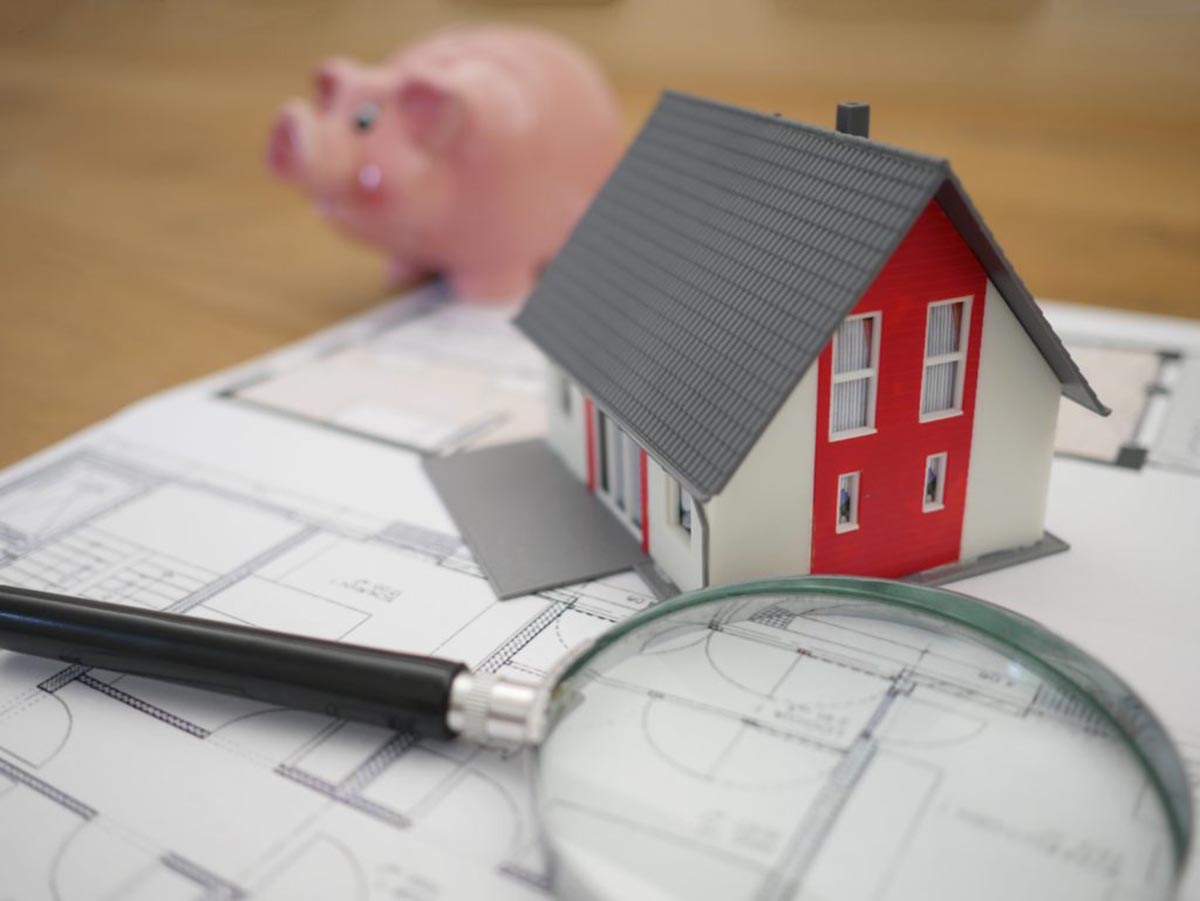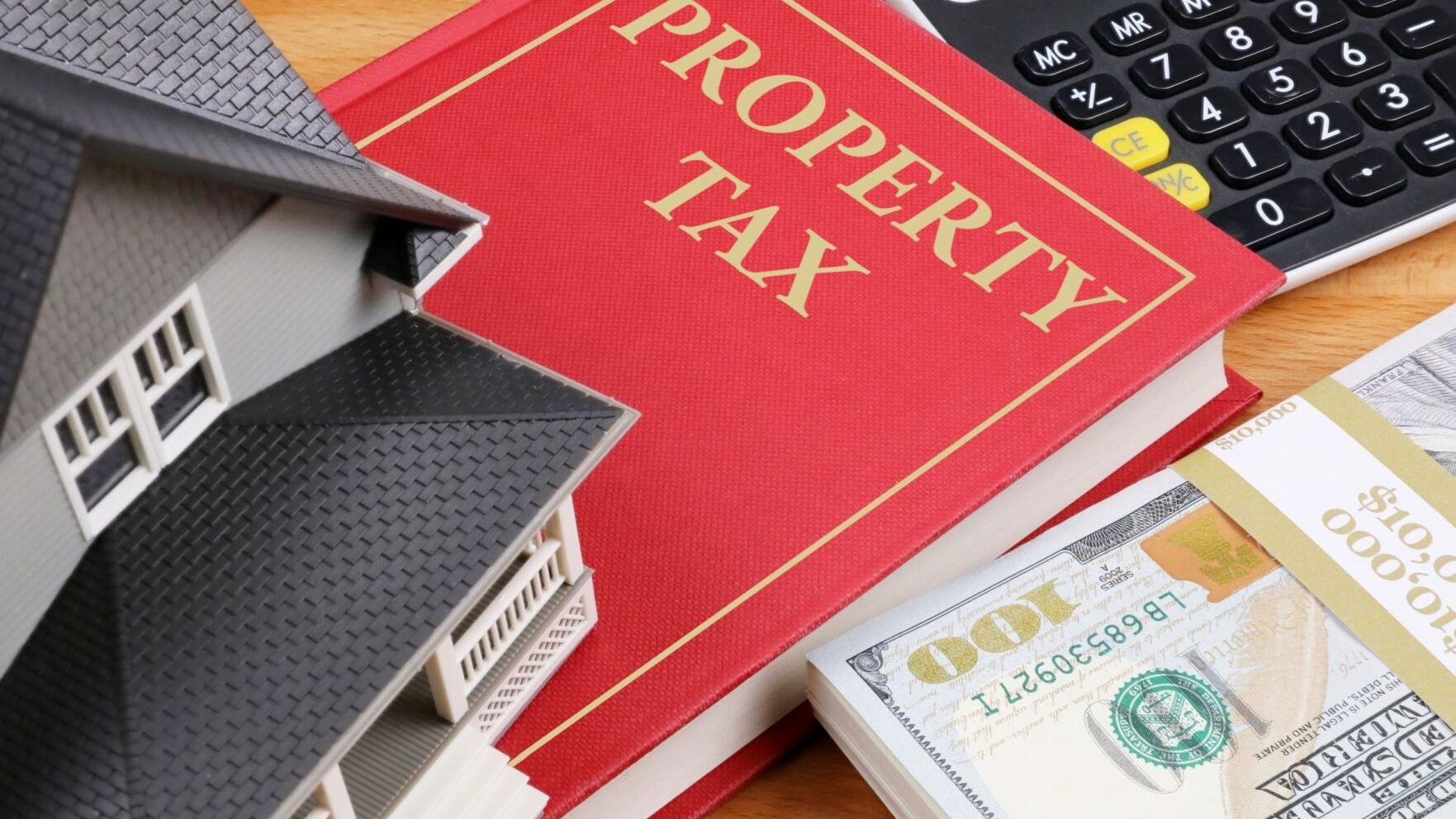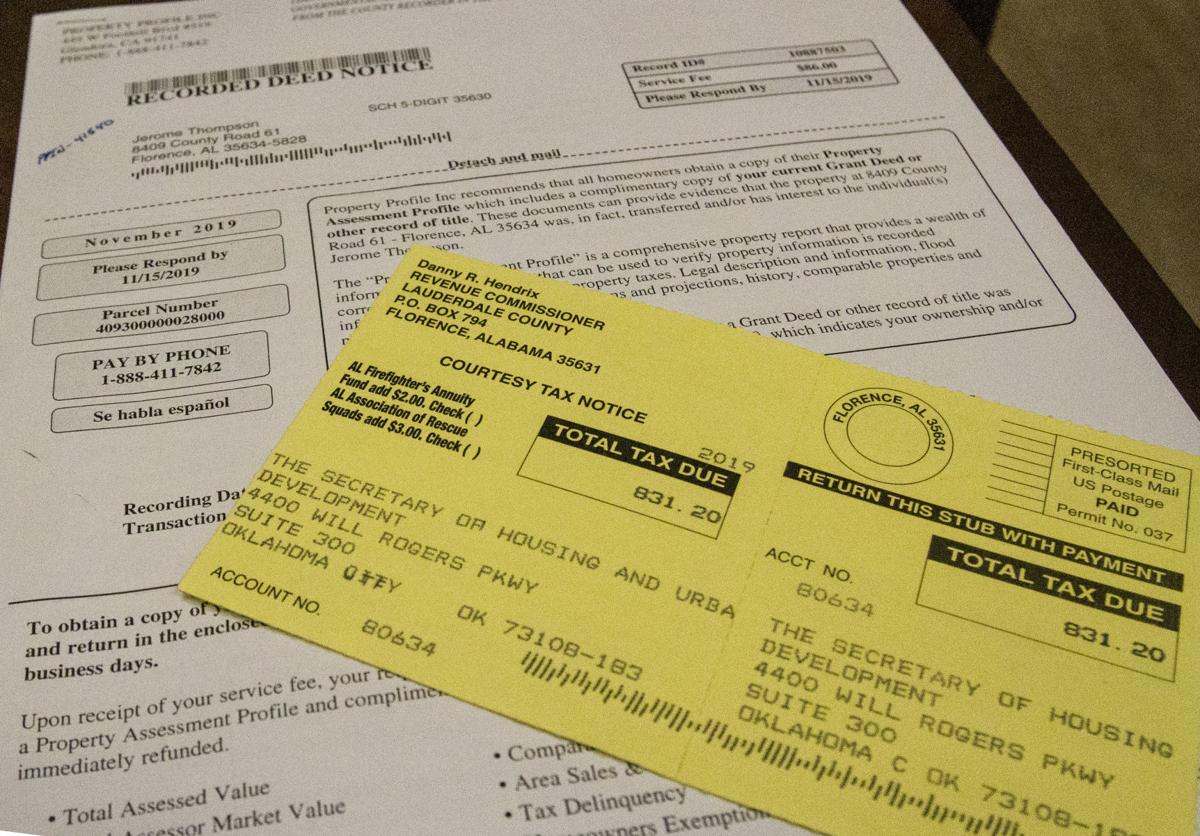Home>Home Maintenance>How To Do A Property Assessment


Home Maintenance
How To Do A Property Assessment
Modified: March 6, 2024
Learn the steps for a proper property assessment. Discover the key aspects of home maintenance to ensure your property remains in top condition.
(Many of the links in this article redirect to a specific reviewed product. Your purchase of these products through affiliate links helps to generate commission for Storables.com, at no extra cost. Learn more)
Introduction
Welcome to the ultimate guide on how to do a property assessment. Whether you are a homeowner looking to evaluate the value of your property, a real estate investor searching for potential opportunities, or even a curious individual interested in understanding the intricacies of home maintenance, this article is for you.
Performing a property assessment is crucial in determining the current condition, market value, and potential rental income of a property. It involves a comprehensive evaluation of various factors such as location, size, amenities, and overall condition. By conducting a thorough assessment, you can make informed decisions about buying, selling, or improving a property.
In this guide, we will walk you through the step-by-step process of conducting a property assessment. From gathering necessary information to analyzing market trends, we will cover everything you need to know to carry out a successful assessment. So, let’s dive right in!
Key Takeaways:
- Gather all property documents, sales history, and neighborhood information to understand a property’s background and make informed decisions during the assessment process.
- Evaluate the property’s location, size, condition, amenities, market value, and potential rental income to determine its value and make well-informed decisions about buying, selling, or improving the property.
Read more: What Is Property Assessment
Step 1: Gather necessary information
The first step in conducting a property assessment is to gather all the necessary information about the property. This includes any documents, records, and data that will provide valuable insights into the property’s history, ownership, and legal aspects. Here are some key pieces of information you should gather:
- Property documents: Collect all the relevant legal documents related to the property, such as the title deed, property tax records, and any previous surveys or appraisals.
- Sales history: Obtain the sales history of the property, including the purchase price and any previous sales transactions. This will give you an idea of the property’s value over time.
- Building permits: Check if there have been any recent building permits issued for the property. This will provide insights into any recent renovations, expansions, or upgrades.
- Tenant information: If the property is currently rented, gather information about the tenants, including lease agreements, rent payments, and any rental history.
- Utilities and services: Find out about the utility providers and services associated with the property, such as water, electricity, gas, internet, and waste management.
- Neighborhood information: Research the neighborhood where the property is located. Look for information on nearby schools, parks, shopping centers, public transportation, and any upcoming developments or infrastructure projects.
Gathering all this information will give you a comprehensive view of the property’s background and help you make more informed decisions during the assessment process. It will also provide a solid foundation for the subsequent steps in evaluating the property’s value and potential.
Once you have gathered all the necessary information, it’s time to move on to the next step: evaluating the property’s location.
Step 2: Evaluate the property’s location
The location of a property plays a crucial role in its value and desirability. Before diving into the physical aspects of the property, it’s important to evaluate its location and assess its potential. Here are some key factors to consider when evaluating the property’s location:
- Neighborhood: Take a closer look at the neighborhood where the property is situated. Evaluate its overall safety, cleanliness, and proximity to amenities such as schools, parks, restaurants, and shopping centers. A desirable neighborhood can significantly increase the value of a property.
- Accessibility: Consider the property’s accessibility in terms of transportation. Is it located near major highways, public transportation, or airports? Easy access to transportation networks can make a property more desirable for residents and potential buyers.
- Market trends: Research the current real estate market trends in the area. Are property values on the rise? Are there any new developments or infrastructure projects planned? Understanding the market dynamics will help you assess the property’s potential for future value appreciation.
- View and surroundings: Look at the views and surroundings of the property. Is it located near natural attractions, waterfronts, or scenic landscapes? Properties with attractive views and surroundings often command higher prices.
- Zoning and regulations: Familiarize yourself with the local zoning regulations and any future development plans in the area. This will give you insights into potential changes in the neighborhood that could affect the property’s value.
By evaluating the property’s location, you can assess its attractiveness to potential buyers or renters. A prime location can make up for certain shortcomings in the physical aspects of a property and ultimately contribute to its overall value.
Now that you have evaluated the property’s location, it’s time to move on to the next step: assessing the property’s size and dimensions.
Step 3: Assess the property’s size and dimensions
The size and dimensions of a property are important factors to consider when conducting a property assessment. Evaluating the property’s size will give you insights into its potential uses, functionality, and overall value. Here are the key aspects to assess when evaluating the property’s size and dimensions:
- Lot size: Determine the total area of the property’s lot. This includes both the land and any outdoor spaces such as gardens, yards, or parking areas. A larger lot size can provide more flexibility for future developments or landscaping.
- Building size: Measure the total floor area of any buildings or structures on the property. This includes the main house, any outbuildings, or additional structures such as garages or sheds. The building size will give you an idea of the available living or working space.
- Room dimensions: Assess the dimensions of each room within the property. Note the sizes of bedrooms, living areas, kitchens, bathrooms, and any other significant spaces. This will help you evaluate the functionality and potential use of each room.
- Ceiling heights: Consider the height of the ceilings throughout the property. Higher ceilings can create a sense of spaciousness and luxury, while lower ceilings may feel more cozy and intimate.
- Outdoor areas: Evaluate any outdoor areas associated with the property, such as patios, decks, or balconies. These spaces can add value to the property by providing additional living or entertainment areas.
Assessing the property’s size and dimensions will give you a clear understanding of its potential uses and limitations. It will also help you determine if the property meets your specific needs or if any modifications or expansions are necessary.
Now that you have assessed the property’s size and dimensions, it’s time to move on to the next step: examining the property’s condition.
Step 4: Examine the property’s condition
Evaluating the condition of a property is crucial in assessing its value and identifying any potential maintenance or repair needs. By examining the property’s condition, you can uncover hidden issues and estimate the costs associated with addressing them. Here are the key aspects to consider when examining the property’s condition:
- Structural integrity: Inspect the overall structural integrity of the property. Look for signs of cracks, sagging, or unevenness in the walls, floors, or ceilings. These could indicate potential structural issues that may require professional assessment.
- Roof and exterior: Assess the condition of the roof and exterior of the property. Look for any signs of damage, leaks, or deterioration. Pay attention to the condition of the siding, windows, doors, and any outdoor features such as fences or landscaping.
- Plumbing and electrical systems: Evaluate the plumbing and electrical systems within the property. Check for any leaks, faulty wiring, or outdated systems. Assess the functionality and safety of the plumbing fixtures, outlets, switches, and circuit breakers.
- Heating and cooling systems: Inspect the heating and cooling systems, including the furnace, air conditioning unit, and any additional equipment such as radiators or ductwork. Test their functionality and check for any signs of wear or inefficiency.
- Interior condition: Evaluate the condition of the interior spaces, including walls, ceilings, and flooring. Look for any signs of damage, mold, or evidence of previous repairs. Take note of the general cleanliness and maintenance of the property.
By thoroughly examining the property’s condition, you can determine the level of maintenance or repairs required and estimate the associated costs. This will give you a more accurate picture of the property’s value and help you make informed decisions.
Now that you have examined the property’s condition, it’s time to move on to the next step: analyzing the property’s amenities and features.
Read more: How Do I Obtain Tax Property Assessment
Step 5: Analyze the property’s amenities and features
When conducting a property assessment, it’s important to analyze the amenities and features that the property offers. These additional attributes can greatly influence its value and desirability. Here are the key aspects to consider when analyzing the property’s amenities and features:
- Interior features: Take note of any unique or desirable features inside the property. This could include hardwood flooring, granite countertops, a fireplace, or high-end appliances. These features can increase the property’s appeal and value.
- Outdoor spaces: Assess the outdoor spaces associated with the property. This could include a garden, patio, swimming pool, or a deck with a scenic view. Well-maintained and functional outdoor areas can enhance the property’s attractiveness.
- Storage options: Evaluate the availability of storage options within the property. This could be in the form of closets, cabinets, a basement, or a garage. Sufficient storage space is often a desirable feature for potential buyers or renters.
- Parking facilities: Consider the availability and convenience of parking facilities. This could include a private driveway, a garage, or designated parking spaces. Adequate parking options can add value to the property.
- Energy efficiency: Assess the property’s energy efficiency features, such as insulation, double-glazed windows, or energy-efficient appliances. These features can reduce utility costs and appeal to environmentally conscious individuals.
- Security systems: Evaluate the presence of security systems or measures in the property. This could include surveillance cameras, alarm systems, or gated access. Enhanced security features can increase peace of mind for residents or potential buyers.
Analyzing the property’s amenities and features will provide insights into its unique selling points and appeal to potential buyers or renters. These additional attributes can significantly impact the property’s value and desirability.
Now that you have analyzed the property’s amenities and features, it’s time to move on to the next step: considering the property’s market value.
When doing a property assessment, make sure to thoroughly inspect the interior and exterior of the property, including the condition of the roof, foundation, plumbing, and electrical systems.
Step 6: Consider the property’s market value
Considering the market value of a property is essential when conducting a property assessment. Understanding the current market conditions and trends will help you determine the potential worth of the property. Here are the key factors to consider when evaluating the property’s market value:
- Comparable properties: Research similar properties in the area that have recently been sold or are currently on the market. Look for properties that are similar in size, condition, and location. Analyzing the selling prices of comparable properties will give you a benchmark for the property’s market value.
- Appraisal reports: If available, review any appraisal reports conducted on the property. Appraisal reports provide an unbiased assessment of the property’s value based on market conditions, property features, and recent sales data.
- Local market conditions: Consider the overall market conditions in the local area. Has demand increased or decreased? Are prices rising or stabilizing? Understanding the market trends will help you gauge the property’s potential value.
- Economic factors: Take into account the broader economic factors such as interest rates, employment rates, and economic growth in the region. These factors can influence the demand and pricing of properties in the area.
- Future development plans: Stay informed about any upcoming development plans or infrastructure projects in the area. New developments can impact property values, either positively or negatively, depending on their nature and proximity to the property.
By considering the property’s market value, you can determine if the property is priced fairly and if it presents a worthwhile investment opportunity. It will also help you negotiate effectively when buying or selling a property.
Now that you have considered the property’s market value, it’s time to move on to the next step: calculating the property’s potential rental income.
Step 7: Calculate the property’s potential rental income
Calculating the potential rental income of a property is crucial, especially if you plan to rent it out. Estimating the rental income will help you determine the property’s profitability and its potential as an investment. Here are the key steps to calculate the property’s potential rental income:
- Research rental rates: Investigate the rental rates of similar properties in the area. Look for properties that are comparable in terms of location, size, and amenities. This will give you an idea of the average rental rate in the neighborhood.
- Evaluate demand: Assess the demand for rental properties in the area. Factors such as population growth, job opportunities, and proximity to schools or universities can affect the demand for rentals. Higher demand typically translates to higher rental rates.
- Determine occupancy rate: Consider the vacancy rate in the area. This is the percentage of time a property is likely to be unoccupied. A lower vacancy rate indicates high demand and a greater likelihood of consistent rental income.
- Consider property management expenses: Account for any expenses associated with property management, such as advertising, tenant screening, maintenance, and repairs. These costs will affect your net rental income.
- Factor in utilities and maintenance: Determine if utilities and maintenance expenses will be covered by the tenant or if they will be your responsibility. In the latter case, estimate these costs and deduct them from the rental income.
By calculating the property’s potential rental income, you can assess its profitability and determine if it aligns with your investment goals. This information will also be valuable when deciding on rental pricing and comparing it with the costs associated with owning the property.
Now that you have calculated the property’s potential rental income, it’s time to move on to the next step: reviewing comparable properties in the area.
Step 8: Review comparable properties in the area
Reviewing comparable properties in the area is an important step in the property assessment process. By analyzing similar properties that have recently sold or are currently on the market, you can gain valuable insights into the value and marketability of the property you are assessing. Here’s how to effectively review comparable properties:
- Identify criteria: Determine the key criteria that are important for comparison, such as location, size, condition, amenities, and features. This will help you narrow down the selection of comparable properties.
- Research recent sales: Look for recently sold properties that closely match the criteria you identified. Pay attention to their sale prices and how quickly they sold. This information will give you an idea of the current market value in the area.
- Study active listings: Analyze properties that are currently on the market and competing with the property you are assessing. Note their listing prices, features, and duration on the market. This will help you gauge the competition and adjust your assessment accordingly.
- Consider differences: Take into account any differences between the comparable properties and the property you are assessing. Factors such as location, condition, or unique features can influence the value. Adjust your assessment accordingly to reflect these differences.
- Consult with real estate professionals: Seek advice from real estate professionals, such as appraisers or real estate agents, who have expertise in the local market. They can provide valuable insights and guidance based on their knowledge and experience.
Reviewing comparable properties will allow you to make a more accurate assessment of the property you are evaluating. It provides a solid basis for determining a fair market value, identifying strengths and weaknesses, and making informed decisions.
Now that you have reviewed comparable properties in the area, it’s time to move on to the next step: consulting with professionals if needed.
Step 9: Consult with professionals if needed
When conducting a property assessment, it can be beneficial to consult with professionals who have specialized knowledge and expertise in the field. Their insights and advice can provide valuable information and ensure a more comprehensive assessment. Here are some professionals you may consider consulting with:
- Real estate appraiser: A professional appraiser can provide an unbiased and detailed assessment of the property’s value. They have the expertise to analyze market trends, property features, and comparable sales data to provide an accurate appraisal.
- Home inspector: A home inspector can thoroughly evaluate the property’s condition, identifying any potential issues or areas in need of repair. Their expertise can give you a better understanding of the property’s structural integrity and help estimate maintenance costs.
- Real estate agent: A knowledgeable real estate agent can offer valuable insights into the local market, current trends, and pricing strategies. They can provide information on comparable properties and assist in determining the property’s market value.
- Property manager: If you plan to rent out the property, consulting a property manager can provide valuable information on rental demand, rental rates, and property management responsibilities. They can also help estimate potential rental income and identify any rental regulations in the area.
- Contractor: If the property requires extensive renovations or repairs, consulting with a contractor can provide insights into the scope of work and associated costs. They can help you assess the feasibility of renovation projects and provide estimates to factor into your assessment.
Consulting with professionals can bring expertise, objectivity, and a fresh perspective to your property assessment. They can provide valuable advice, address any specific concerns, and help you make informed decisions based on their specialized knowledge.
Now that you have considered consulting with professionals, it’s time to move on to the final step: finalizing the property assessment report.
Step 10: Finalize the property assessment report
Finalizing the property assessment report is the last step in the process, where you compile all the information gathered and present it in a comprehensive report. This report will serve as a valuable resource for making informed decisions about the property. Here are the key steps to finalize the property assessment report:
- Compile all data: Gather all the information collected throughout the property assessment process, including the property’s background, location evaluation, size and dimensions, condition assessment, amenities and features, market value, potential rental income, review of comparable properties, and consultation notes.
- Organize the report: Structure the report in a logical and easy-to-follow format. Start with an introduction that provides an overview of the purpose and scope of the assessment. Then, present the findings and analysis for each step in a clear and concise manner.
- Include supporting evidence: Back up your findings with relevant data, such as property documents, sales data, photographs, or any other supporting evidence. This will lend credibility to your assessment and provide transparency to stakeholders.
- Provide analysis and recommendations: Analyze the gathered information and present your assessment of the property’s value, potential, and any key takeaways. Include any recommendations for improvements, repairs, or pricing strategies based on your findings.
- Proofread and revise: Review the report carefully, checking for any errors or inconsistencies. Ensure that the language is clear and concise, and that any technical terms are explained. Revise and edit as needed to enhance readability and ensure the report accurately represents your assessment.
Once you have finalized the property assessment report, it can be shared with relevant parties such as property owners, investors, lenders, or real estate agents. The report will provide them with a comprehensive understanding of the property’s value, potential, and key considerations.
Congratulations! You have completed the 10 steps to conduct a property assessment. By following this process, you now have the knowledge and tools to make informed decisions about buying, selling, renting, or improving a property based on a thorough evaluation.
Conclusion
Conducting a property assessment is a crucial step in understanding the value, potential, and condition of a property. Whether you are a homeowner, real estate investor, or simply have an interest in home maintenance, the 10 steps outlined in this guide provide a comprehensive framework to guide you through the assessment process.
By gathering necessary information, evaluating location, assessing size and dimensions, examining condition, analyzing amenities and features, considering market value, calculating potential rental income, reviewing comparable properties, consulting professionals if needed, and finalizing the assessment report, you can gain valuable insights and make informed decisions.
Remember that each step is interconnected and provides a deeper understanding of the property’s worth. By gathering the necessary information, evaluating its location and physical attributes, and considering market factors, you can determine its value and make decisions aligned with your objectives.
It is essential to conduct a thorough and comprehensive assessment, ensuring that all aspects of the property are carefully evaluated. The information gathered will not only enable you to make informed decisions about buying, selling, or renting a property but also help you identify potential areas for improvement and estimate associated costs.
Consulting with professionals in the field can further enhance your assessment by providing specialized knowledge and expertise. Whether it’s an appraiser, home inspector, real estate agent, property manager, or contractor, their input can help you refine your evaluation and ensure accuracy.
Ultimately, the finalized property assessment report serves as your comprehensive guide, presenting all the data, analysis, and recommendations. This report can be valuable for property owners, investors, or anyone involved in the decision-making process regarding the property.
By following these 10 steps, you are equipped to conduct a thorough and effective property assessment. Use this knowledge to make well-informed decisions, seize opportunities, and achieve your home maintenance or real estate goals.
Frequently Asked Questions about How To Do A Property Assessment
Was this page helpful?
At Storables.com, we guarantee accurate and reliable information. Our content, validated by Expert Board Contributors, is crafted following stringent Editorial Policies. We're committed to providing you with well-researched, expert-backed insights for all your informational needs.














0 thoughts on “How To Do A Property Assessment”